#Venezuelan cocoa
Explore tagged Tumblr posts
Text
ベネズエラカカオ豆卸
皆さんこんにちは! 現在のパタネモカカオ卸価格は注文数量によって異なります。価格を確認するためにプライベートホームページを共有します https://www.cacaoshares.com/product/wholesale-cacao/ パスワード🔑 pm で相談ください さらに、 ベネズエラから直接F2カカオのスポット契約も受けています 今週ともよろしくおねがいします we have private offers of quality commercial cacao from Venezuelan ports (F2) Cacaoshares Team
#Bulk cacao#CacaoShares#cocoa beans wholesale#cocoa futures#Cocoa spot contract#commodity cacao#futures venezuela#Venezuelan cocoa#カカオ#パタネモ
0 notes
Text
From starvation in Venezuela to misery in Brazil, the forced exile of the Warao
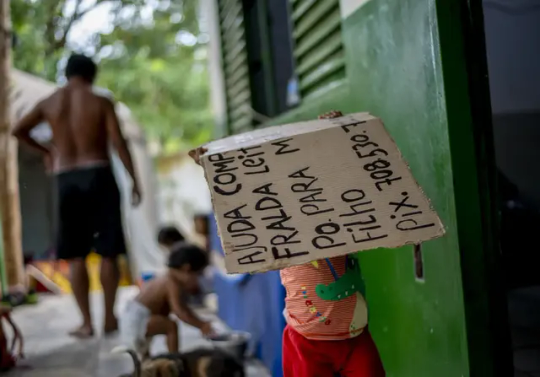
“The street back there is full of Venezuelans,” a woman says when she sees me looking for the house where Warao Indigenous woman Rossana Medrano lives, in the Primeiro de Março neighborhood on the outskirts of Cuiabá, the capital of Mato Grosso, Brazil. Rossana was waiting at the gate of a house that from the outside seemed too small to hold six adults and six children. The 40-year-old Warao woman lives with her husband, four children and one granddaughter, along with her brothers-in-law and their wives. Mattresses and hammocks are spread throughout the home’s bedroom, living room and kitchen for everyone to fit.
Since they crossed the border between Brazil and Venezuela on foot, Rossana and her family no longer have the place they call janoko, the word for home in Warao.
Rossana grew up on the banks of the Orinoco River, in the Venezuelan Amazon. The river is part of the history of the Warao, known as the “canoe people” because of their close relationship to the water. “We lived as if it were a village, but our village was the entire river. Our parents worked with fishing, they planted plantains and yams, as you all call them here. We grew up here, our parents had some land, my grandfather and grandmother planted cocoa, they would sell it in the city. We grew up on that land. We worked in the market selling fish and made crafts too.”
In Venezuela, the Warao had already suffered invasions of their territory by oil, mining and timber companies as well as farmers. Rossana was 14 when she was forced to leave the Orinoco Delta and live in Tucupita, a city in the Venezuelan state of Delta Amacuro, more than 800 kilometers from the border with Brazil. “A lot of foreign people came and took our land. Since we didn’t have documents, we would complain, but we couldn’t get the land back because they already had cattle, they got documents and started taking our land,” Rossana says. In Tucupita, they would sell cocoa, fish, and crafts.
Before the Covid-19 pandemic made the economic situation in Venezuela even worse, Rossana’s grandparents’ cocoa crops were destroyed by a flood. There was no food, and the pandemic made everything worse. Facing hunger and protective isolation imposed by Covid, thousands of Venezuelans and Warao Indigenous people decided to cross the border, heading for Brazil. “We went very hungry, I went hungry and the kids did too. It was tough, really tough,” Rossana continues. “We decided to come here in 2020. Our grandparents had passed already, we didn’t go to our land anymore, and our relatives weren’t there anymore. We were alone. There was no food, we only ate once a day.”
Continue reading.
#brazil#politics#venezuela#indigenous rights#environmentalism#migration#brazilian politics#venezuelan politics#geopolitics#warao people#refugees#image description in alt#mod nise da silveira
16 notes
·
View notes
Text
u know in venezuela the oreo is different. i dont know in what other places they might also be different but i know that the “original” oreos are completely different to the “originals” found in america. in america theres the dark oreos that are like black colored and in venezuela our oreos are a light brown color. and they also taste different but its still whats considered The Oreo. its what is seen as the regular oreo. and i realized this when i was eating american oreos one day and my father saw me and said i cant believe u like that american shit. and i was like what?☹️i lov oreos. and he was like me too but Not Those. the american ones are gross☝️ and thats when i learned they were different!!!!!!!! i had completely forgotten what venezuelan oreos looked like. and after that is when i went off to my local latin market to find authentic venezuelan oreos and i fucking did and he was right. they taste more like actual chocolate and they are in fact fucking better

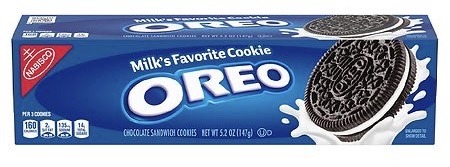

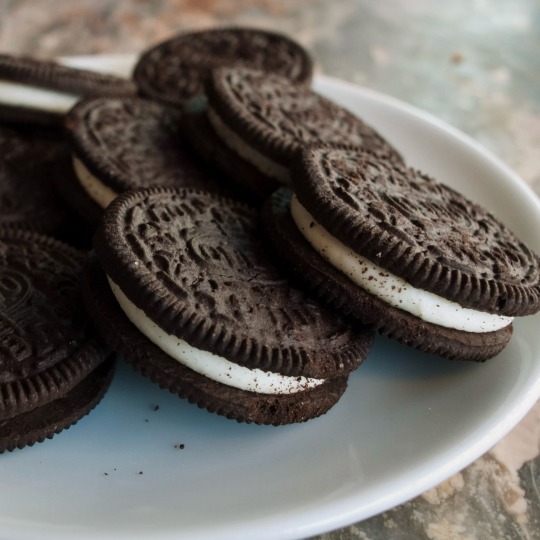
just to give a visual difference here on what im talking about
then i started reading the ingredients on both to understand why exactly its different. its almost entirely the same ingredients, i mean its still a fucking oreo at the end of the day, except for two main things. of course the american ones have high fructose corn syrup. it simply wouldnt be an american product if it wasnt trying to poison you with sugar you would it? and! what i thought was the most interesting was that the american ones process the cocoa with alkali, also known as the dutch process, which does make the cocoa powder darker!!!!! so that solves why the visual difference is so stark. and then after i read more about what the alkali process actually does i learned that it also makes the flavor more mild and takes away from the richness of the cocoa! which also explains why the venezuelan ones taste better (in my humble opinion).
anyways that was todays food lesson. the more ya know
10 notes
·
View notes
Note
Hiiii Pixie trick or treaaattt? 👀
g EEEEEEE<333333:3 hii i bestow upon you my favorite venezuelan treat since i was but a wee sprout picture a little 5 yr old goblin in venezuela munching on these every day!!!!!!!!!


now if i’m not wrong these originate from venezuela in the 1980s!!!! and are made from 100% venezuelan cocoa aka THE BEST🔥 its very popular and can be found in other latin countries as well. theres also an american version called pirucream. theres also a lot of off brand american versions of this that exist that i have tried and find to be subpar compared to the original but thats cus im biased!!!! its basically just chocolate rolled in wafers and its fucking fantastic<3 literally every time i know someone traveling over there i ask them to bring me some😭
5 notes
·
View notes
Text
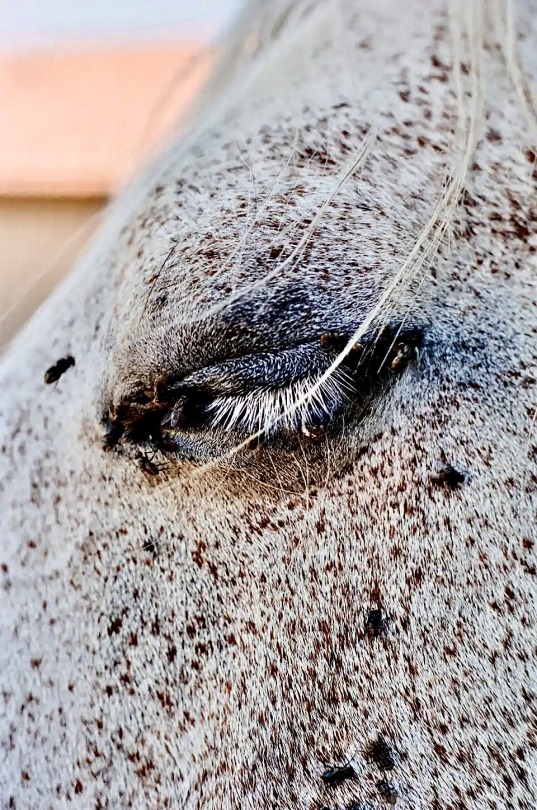
Julia, from My Eyes Have Seen You
Omri Emile Rosengart collected stories over four years for his book My Eyes Have Seen You. The moments shared are preserved pieces of his continued journey, revealing his thoughts towards each memory presented. There will be a book signing at Photo London.
(Photo: Omri Emile Rosengart / Bright Gallery)

Female Boxers, 2024
Julia Fullerton-Batten is a fine art photographer renowned for her cinematic visual storytelling. Her large-scale projects are based around specific themes, each image embellishing her subject matter in a series of thought-provoking ‘stories’ using staged tableaux and sophisticated lighting techniques
(Photo: Julia Fullerton-Batten)

Blending In, 2018
Bee Gats is a Latino photographer from Miami. He creates gritty, raw and unfiltered portraits of Miami’s underground – a world he himself grew up in – often including images of guns and gang violence.
(Photograph: BeeGats / Mortal Machine)

Las taparas de Caruao, 2021
Gabriel Pinto, a young Venezuelan photographer and researcher, focuses on ethnographic research and photography. Pinto’s work focuses on celebrating, honouring and preserving African-Venezuelan culture, inspired by his deep connection to his heritage in Barlovento, where 100,000 African people were taken as slaves between the 16th and 19th centuries. They were forced to work as labourers on cocoa haciendas – this history has resulted in strong regional traditions, cuisine and crafts.
(Photo: Gabriel Pinto / BETA Contemporary)

Fire masks, Downshire Hill, London, 1941
This year’s Lee Miller Archives booth at Photo London will centre mostly on her war journalism, tying the booth to the movie Lee. Photo London gives collectors the opportunity to buy a piece of history before the major forthcoming exhibition at Tate Britain in October. You can see more in our gallery here.
(Photo: Lee Miller / Lee Miller Archives)

Angela Davis, 1960s
Amar Gallery’s presentation is an example of exhibitors using their space to highlight social issues, in this case forefronting messages of revolution, equality and justice.
(Photo: Stephen Shames / Amar Gallery)

Feast II, 2024
Shooting almost exclusively on black and white film and using traditional developing techniques – in this case multiple-exposure silver gelatin prints – in his home studio, Robin Hunter Blake sets out to explore the more tangible processes in image making. He has a pure and poetic approach to process.
(Photo: Robin Hunter Blake / Guerin Projects)
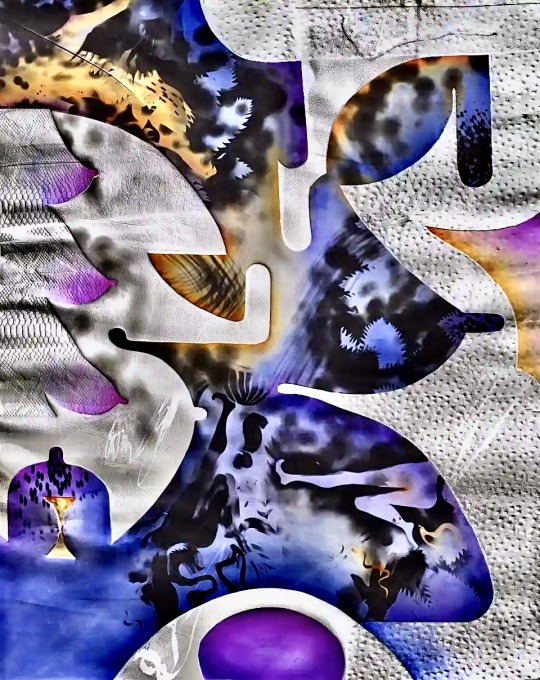
Running, 2024
Klea McKenna demonstrates a return to traditional techniques, and the celebration of the objectivity of a photograph as something to be seen in real life and to be experienced.
(Photo: Klea McKenna / EUQINOM)
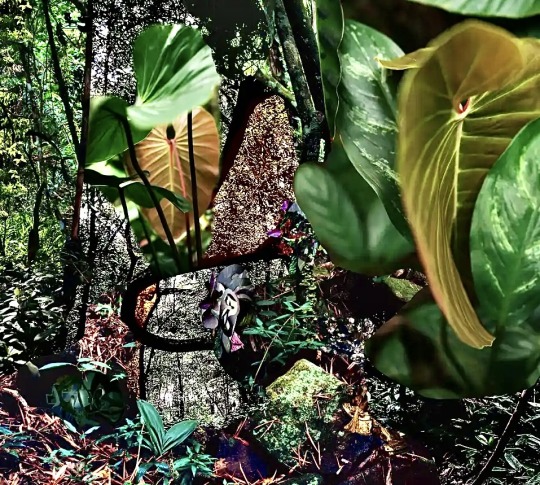
Jaraguatambu, 2024
Bendana-Pinel gallery shows one of Brazil’s leading contemporary photographers, Caio Reisewitz, whose work explores the changing relations of city and countryside in light of the climate emergency, both in Brazil and the rest of the world. Brazil is a nation of contradictions, caught between a desire to preserve an exceptionally rich environmental heritage and the will for exponential growth. Reisewitz seeks to capture the image of a fragile beauty, that of an unspoiled nature; an Eden endangered by deforestation, oil exploitation and expansion of settlements.
(Photo: Caio Reisewitz / Bendana Pinel Art Contemporain)

Drum cover girl Erlin Ibreck stepping out of a Jaguar in Kilburn, London, 1966
Galerie Clémentine de la Féronnière returns to the fair with works by Martin Parr and James Barnor. Photographs by Barnor from his studio in London in the late 60s celebrate his pioneering role in bridging Ghanaian and British cultural identities through photography.
(Photo: James Barnor / Galerie Clémentine de la Féronnière)
It’s a knockout!
Punchy images from
Photo London
Female boxers, revolutionary icons and fascinating early works by Martin Parr all feature in the 10th edition of the celebrated photography festival.
The 2025 edition of Photo London will take place at Somerset House, Strand, London WC2R 1LA from May 15-18, 2025, with a Preview Day on May 14. The fair is also known as the tenth edition of Photo London.
By Mee-Lai Stone
The Guardian - 14 May 2025
•
#Photography#Exhibitions#Photo London 2025#American photographer - Lee Miller#Photographer - Martin Parr#Photographer - James Barnor#American civil-rights activist - Angela Davis#The Guardian
0 notes
Text
The Delicious Chocolate Tres Leches Cake from El Exquisito Sabor: A Latin Dessert Like No Other
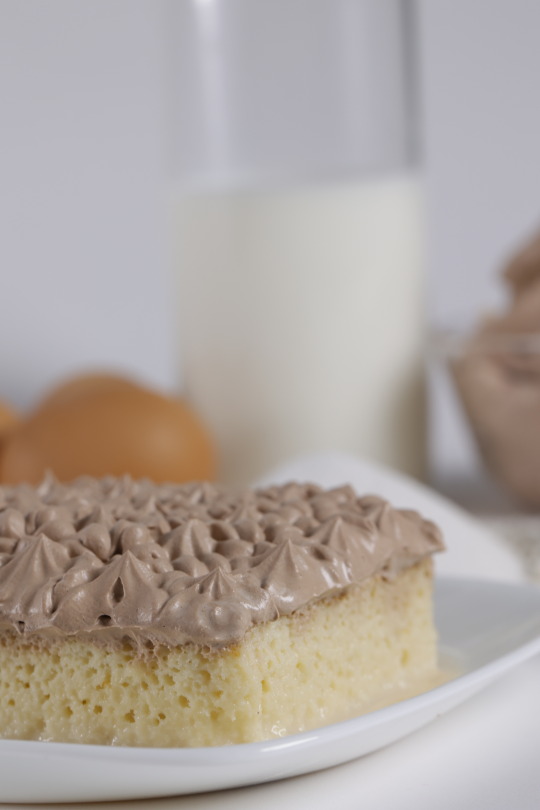
In the world of Latin desserts, few treats are as beloved as the classic tres leches cake. But when you add rich, premium chocolate to the mix, you create something truly special: the Chocolate Tres Leches Cake from El Exquisito Sabor.
A Reinvented Classic Full of Flavor
At El Exquisito Sabor, a family-owned Venezuelan bakery dedicated to traditional Latin desserts, we gave the iconic tres leches a flavorful twist. We infused our signature sponge cake with high-quality cocoa and soaked it in a custom chocolate-infused blend of evaporated milk, condensed milk, and heavy cream. The result? A rich, moist, and unforgettable dessert.
A Cultural Staple in Latin America
Tres Leches Cake is more than a dessert—it’s part of Latin American tradition. From birthdays to holidays and casual family dinners, it plays a starring role in many celebrations. Adding chocolate brings a new layer of indulgence to this cultural icon, creating a dessert that respects its origins while satisfying modern tastes.
Handcrafted Quality, One Cake at a Time
Our bakers use only the finest ingredients: fresh eggs, select flours, and pure chocolate. Each cake is baked to perfection, then drenched in our creamy chocolate three-milk mixture. This process gives it the perfect texture—soft, velvety, and decadent. Every slice is an example of our commitment to excellence.
A Multi-Sensory Experience
From the first glance to the last bite, the Chocolate Tres Leches Cake delivers a full sensory journey. The deep cocoa aroma, the delicate crumb, and the melt-in-your-mouth moisture all combine to create an irresistible experience you won’t forget.

Perfect for Any Occasion
Whether it’s a birthday party, a holiday meal, or a special gift, the Chocolate Tres Leches Cake from El Exquisito Sabor is always a welcome choice. Its rich flavor appeals to kids and adults alike, and it brings a touch of Latin warmth to any table.
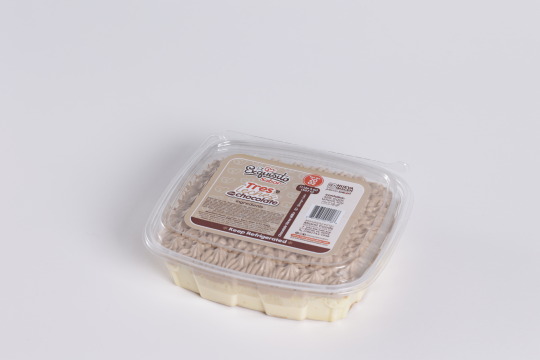
A Venezuelan Family Legacy in Every Slice
El Exquisito Sabor began as a dream shared by a Venezuelan family passionate about sharing their dessert traditions. Today, we proudly bring that legacy to kitchens across the United States. Our Chocolate Tres Leches Cake is a reflection of our heritage and our promise to keep Latin flavors alive in every home we reach.
A Taste of Home for Latinos in the U.S.
In cities like Miami, New York, and Virginia, where Latino communities thrive, traditional desserts become more than just food—they are cultural symbols. The Chocolate Tres Leches Cake from El Exquisito Sabor is one of those symbols, helping Latinos reconnect with their roots while introducing others to the beauty of Latin flavors.
Find It Near You
Want a slice? Find us here: 👉 Click to find a store near you
Explore More Latin Desserts
From flan and quesillo to arroz con leche and Cuban capuchinos, there’s something for everyone. 👉 View all our products
#elexquisitosabor#postres#saboresvenezolanos#postresvenezolanos#desserts#saborestradicionales#dessert#latindesserts#customized cakes#treslechescake#tres leches#chocolate tres leches#tres leches de chocolate#latin desserts#el exquisito sabor
0 notes
Text


Imagawayaki (Melting Chocolate Premium)
(今川焼(とろける生チョコ仕立て プレミアム))
Deeply flavored chocolate cream
It features a deep richness and aroma using cocoa mass from Venezuelan cocoa beans, and fresh cream from Hokkaido for a smooth texture.
Bitter dough
Inspired by raw chocolate, it is finished with a bitter dough made using cocoa powder.
Serve warm or slightly cold!
It can be enjoyed warm, or even slightly chilled.
#japanese sweets#chocolate#sweets#japanese chocolate#japanese frozen foods#frozen food#nichirei foods
1 note
·
View note
Text
🕸❤𝕎𝕖𝕓𝕓𝕖𝕕 𝕊𝕔𝕒𝕣𝕤💙🕸
ℍ𝕖𝕒𝕕𝕔𝕒𝕟𝕠𝕟𝕤 - ℂ𝕠𝕠𝕜𝕚𝕟𝕘
[I was eating at lunch,but i was also craving of many other foods so got some idea of these! This is all pure fluff!]

𝕂𝕒𝕚𝕟𝕖 ℙ𝕒𝕣𝕜𝕖𝕣
- Okay since Kaine he used eat a lot already done food, usually like pizzas since by the Houston era. So at the start he was very bad at cooking, like clumsy and he ended angry because his patience gone.
- His first food he finally learnt could be fried eggs, poor dude but we can't blame him.
- Afortunately as he became couple of Marlette, he knew cook the basic so phew, soldier safe.
- But his habit of eat pizzas from Houston won't leave, although he had to control himself because too many calories.
- Kaine seems a lot like he loves eat meat, actually he can eat a semi-raw beef without a problem, dude has an iron stomach.
- He always prepares the breakfast, commonly he does smoothes for him and his lady because fast, easy and healthy.
- Yep, he can also be those persons when smells smoke from the food they go crazy.
- Doesn't like sweet things, he very rarely eat sweets.
- Sometimes he offers a bit of his food to Marlette, this man loves share with her in anything. <3
- He doesn't know cook pasta, he tried but his pasta was awful according his partner, i mean what he expected? His woman is half italian, a pasta lover, so, his pasta, not approved!
- Oooh god, Kaine actually is picky! I mean he can eat anything even rocks (jk) but, depends who cooks it, i have a feeling that Kaine ordered just pizzas from one pizzeria so.
- Spicy food lover? Not really but yes he can handle it really well.
- Don't give this man sushi, seems like he hates it because finds it gross.
- The foods that can kill Kaine in love, are apart of pizzas, italian food and latinamerican gastronomy, he will go feral with his woman and adopted daughter's food. (Somehow Aracely can cook but not a lot, but yes simple).
- Yep, he is also those needing a snack at 3 AM.
- Youtube tutorials, that's it.
𝕄𝕒𝕣𝕝𝕖𝕥𝕥𝕖 𝕊𝕒𝕣𝕒𝕧𝕚𝕒
- Not a professional chief, but she cooks really good.
- She mostly knows cook italian, venezuelan (although a bit rarely does) and basic food basically.
- Doesn't know cook cakes and anything, only normal sweets like gelatin, flan, etc.
- Black Beans hater, the smell also pisses her off.
- When Kaine gave his first pasta to her? Well her reaction was basically when you break the raw pasta in half before cook and suddenly a wild angry italian appears.
- Fish lover, give her fish and she will go aarRrfFf (not too crazy but yes she really loves fish).
- Shares her food only with her Kaine, not to others, with others she is territorial.
- Favorite sweet? Dark chocolate cocoa. Totally.
- Better ask her if she allows get a piece of her favorite things, she can be a lil selfish sometimes.
- No thanks, not fan of fried food, i mean she can eat some but everyday? Hell naw she would throw up.
- Her metabolism is a bit slow but she eats well don't worry.
- Since Kaine does the breakfast, she does the lunch and they together cook the dinner.
- Sometimes, when they are alone, she likes tease Kaine with the pasta for mimic that classic scene of the movie "The Lady and the Tramp".
- Prefers fully the home-made food than the street one.
- She had a strict diet after give birth Oliver, she needed be alright, get her figure back and br healthy again.
- If you deny her food, she will force you eat it, cause she cooked it specially for you and she won't throw the food to the trash, many kids wishes a plate of food. :(
- Empty things like sauce, butter, etc? Latina mother life hacks, "Wait is not empty! There is a little can save a lunch.", i don't know explain but, uh i guess you know lol.
- "Don't even dare put your hair on the food, put your hair up." Correct, she HATES see at least a hair on it.

0 notes
Note
if this question were phrased a little differently, i would also say veronica is this

the $100 milkshake from serendipidity's (a restaurant i believe veronica referenced at some point)
Those who order the LUXE Milkshake will have the luxurious blend served in a custom glass adorned with more than 3,000 premium Swarovski® crystals designed by Master Artist and Kellie DeFries, the ‘Crystal Ninja’. Each ingredient was individually selected by the chef for its unique and delectable qualities: Jersey milk – made from cows originally bred in the Channel Islands, which are popular for the high butterfat content Tahitian vanilla ice cream – sourced from premium slow-grown, sun-cured vanilla beans Devonshire luxury clotted cream – produced in Devon, England, this thick and rich cream is made from heating fine milk until a thick layer of golden cream forms on the surface Madagascar vanilla beans – as the most labour intensive to grow, the Madagascar vanilla plants, Vanilla Planifolia, take up to three years to produce beans that are intense in flavour 23 karat edible gold – this pure and edible gold creates a glimmering, golden sparkle when mixed with the other ingredients Whipped cream – a grass-fed cream, infused with a simple syrup of sugar and vanilla Le Cremose Baldizzone (donkey caramel sauce) – this rare sauce that is sweet and unique in flavour is made from Venezuelan cocoa, Piedmont hazelnuts, fresh donkey’s milk, and cane sugar Luxardo Gourmet Maraschino Cherries – produced in Luxardo, Italy, these cherries are dense and chewy with a sweet-tart flavour made with prized sour Marasca cherries and preserved in the fruit’s famed liquor
What flavor milkshakes are the rvd characters? Not their preferences but their personalities
Doing the core four. I'm also going with fairly common flavors here, otherwise I would go crazy.
Archie is vanilla. We know this. He is the standard. The generic. The old reliable. He's widely, almost universally, enjoyed. This is not an insult. In a world filled with dubious hybrids and ultra-manufactured pints with cavity-inducing, sense-numbing flavors, he dares to be the lone safe choice.
Veronica prides herself on being different. Not in the same way Jughead does (insert hat quote here,) but in a sense that she wants us to think is both incredibly capable and nuanced. She also has shades of femme fatale sensuality as well as an exotic, glamorous past. For this reason, Veronica is an off-the-menu order. Something along the lines of half chocolate, half cherry or half chocolate, half salted caramel. Topped with whipped cream and chocolate shavings.
Jughead is different. Unpopular. Misunderstood. Esoteric. Youth is a curse to him. For that reason, he is pistachio, butter pecan, or butter raisin. Something that is only on the menu because of Jug and a few early bird special frequenters.
Betty is both utterly approachable and deceptively complex. She has depths that both attract and disgust people. In theory she is for everyone, but in practice she is an aquired taste. For this reason, she is a blended root beer float.
#i was very tempted to say something about tahitian vanilla for veronica but ultimately said nah this is diner fare only#hiramaissance
6 notes
·
View notes
Photo

Double Chocolate Brownies
#double chocolate#brownies#doublechocolatebrownies#food porn#dessert#dessert brownie#venezuelan cocoa#venezuelan chocolate#cocoa#chocolate#brownie art#sweet#dark chocolate#brownie love#brownie lover#fudge#fudge brownies
4 notes
·
View notes
Note
I'm 95% sure tomatoes and cocoa were domesticated in mesoamerica tho, not to take away from your post but yeah
About chocolate, tomatoes, the Amazon, Andean biodiversity, Mesoamerican food, ancient domestication, and colonial monoculture: The latest understanding, as far as I know, is actually that both cacao and tomato originated in Amazonia and were domesticated where the tropical Andean slopes transition into Upper Amazonia. Cacao domestication in Amazonia apparently took place at least 5300 years ago at which point Mayo-Chinchipe people already produced chocolate-drinking vessels; domesticated Amazonian tomatoes might be even older and apparently traveled northward and arrived in Mesoamerica in waves. The cacao origin is described in a 2018 paper involving a site in the Andes; the tomato origin, from a 2020 paper. (For anyone interested, this message seems to be in response to me saying that I “thank the Andes” when I’m eating good food like chocolate and tomatoes; Andean landscapes and ecological influences promote the cultivation of thousands of varieties of native potatoes, too.)


Cacao: The cradle of biodiversity for Theobroma cacao (”the chocolate tree”) and the oldest sites with clear evidence of chocolate domestication are both along the eastern slopes of the tropical Andes in the Upper Amazon, specifically in “Ecuador,” and this is also the region with the highest diversity of distinct cacao strains, now in the heavily-forested border region shared by modern-day Ecuador, Peru, and Brazil. Cacao preparation happened at least 3900 years ago in Mesoamerica. My impression is that Mesoamerica receives so much attention for its chocolate partially because of the clearer historical record in Mesoamerica and also because of the degree to which chocolate consumption was integrated into mythological narratives and social/political practices. (Also, it’s much harder to locate evidence of 5000- or 10-000-year-old gardens in the dense Amazonian forest than it is in the periphery of Ciudad de Mexico’s 20-million-person urban agglomeration.) However the Santa Ana-La Florida site in the Andes of Ecuador, inhabited by the Mayo-Chinchipe culture, contains cacao preparation residue about 5300 years old. A relatively famous paper circulating in 2018 and afterwards described this as “the earliest evidence of [cacao] use” and the site “also reveal[s] the Upper Amazon region as the oldest centre of cacao domestication yet identified.” They could identify the chocolate food and trees as domesticated cacao, rather than “simply” wild cacao, because of the residue of theobromine alkaloid (which occurs most in the domesticated tree but not really in the wild varieties). They also identify Mayo-Chinchipe pottery used to hold chocolate beverages. (The big paper: Sonia Zarrillo et al. “The use and domestication of Theobroma cacao during the mid-Holocene in the upper Amazon.” Nature Ecology & Evolution, published online 29 October 2018. ) Today, Andean and Amazonian cacao strains are important in Ecuador; the nation of Colombia has been expanding cacao cultivation. By far, the largest cacao crops are actually now produced in West Africa. To a lesser extent, deforestation in Indonesia has also allowed for installation of cacao plantations, making the nation the third-largest cacao producer.
Tomato: Coincidentally, it seems tomatoes also originated at and were domesticated along the eastern slopes of the tropical Andes in the Upper Amazon, specifically in eastern Ecuador. I know much less about tomato domestication, and it’s my understanding that the tomato is much older than chocolate, and domestication of tomato is more cryptic and less understood than chocolate, but following the 2012 complete genome sequencing of the domesticated tomato and a 2019 paper in Molecular Biology, I think the now-leading theory is that wild S. pimpinellifolium originated in eastern Ecuador before the S. lycopersicum cerasiforme variety spread to Mesoamerica. And then the now world-famous S. lycopersicum lycopersicum (domesticated tomato) was an innovation of Mesoamerican cultivation before spreading around the world. Tomato apparently traveled to Mexico from the Andes/Amazon at least twice, at 10000 and 7000 years ago respectively. (The big paper: Hamid Razifard et al. “Genomic Evidence for Complex Domestication History of the Cultivated Tomato in Latin America.” Molecular Biology and Evolution. 7 January 2020.)
As of 2018, the understanding of cacao diversity:
Early sites of cacao domestication, from the Zarrillo paper, 2018:

The origin of tomato:

Food domestication in Latin America:



Mesoamerican chocolate:
Maybe cacao is so thoroughly associated with Mesoamerica because: (1) It was the site of vanilla harvest and its use with cacao; (2) the site of sophisticated culinary production of chocolate beverages which attracted the attention of Spanish and French colonizers; (3) the region has a clearer and more obvious (relative to Amazonia) written and historical record transcribed by Mayan/Aztec people, early colonizers, imperialist botanists and plantation owners, and modern-day historians chronicling the process of cacao preparation; (4) and also because Mesoamerican cultures integrated cacao consumption into dramatic mythological narratives, social institutions, and political traditions. Both Aztec and Maya folklore about cacao has, in recent centuries, been recorded and documented (in continuously-surviving cultural traditions, in written records, by early imperialists, by 19th century “scientists,” and by modern archaeologists and colonialist entrepreneurs). Meanwhile, the Upper Amazon cacao region is more about oral histories and there is less of a written record. about the origins of cacao.
Diversity of native cacao species (from the Zarrillo paper, 2018):

Early Holocene habitat of cacao trees:


These were the Mayo-Chinchipe vessels containing chocolate residue, from the 5300-year-old Ecuador site: [edited out the photo; don’t like sharing photos of items taken from archaeological sites, but you can search online to learn more.] The Mayo-Chinchipe site’s vessels also contained residue of maize, Phaseolus vulgaris (bean), Manihot esculenta (cassava/manioc), Dioscera trifida (cush-cush/sacha papa/yam), and sweet potato.
Cacao and peanuts in West Africa; ecological imperialism of plantation monoculture:
Though peanuts were domesticated in South America, it seems like the food is often thought of as a Caribbean staple, probably due to the expertise and sophisticated food preparation techniques of the Gulf Coast, Caribbean, and Afrodescendant Brazil, so that cultural exchange between black communities in the Americas and West Africa allowed the peanut to become celebrated outside of the America. And, to me, it seems like domesticated cacao might present a similar situation: Though cacao is technically more diverse in the Upper Amazon, and apparently older in the Amazon, it is better known for its use in Mesoamerica. Mesoamerican preparation of cacao beverages, and the use of vanilla alongside chocolate, probably also helped to establish a Mesoamerica association with cacao.


Coincidentally, like the cultural exchange of the peanut between Latin American foods and the Caribbean/West Africa, the vast majority of modern cacao is now produced in West Africa. (Especially Ivory Coast and Ghana.) Also coincidentally, regarding imperialism and deforestation for the installation of plantation monocultures, the third-largest producer of cacao is Indonesia (also famous for its deforestation to install palm oil plantations).
Some of the first, and largest, cacao plantations designed for industrial-scale or commercial harvest were established by Spanish imperialists at modern-day Venezuela, not that far away from the cradle of cacao diversity in the Upper Amazon. While French imperialists grew cacao in their Caribbean colonies, the cultivation of different cacao strains in Venezuelan agriculture also happens along the Caribbean coast of the nation. Today, in modern Ecuador, the Upper Amazonian cacao diversity is explicitly celebrated, and the country seeks to market the local “Arriba” strain of “high-class” cacao, which the country promotes under the moniker “Nacional” strain. Some of the genetic work, from the mid-2000s, on early cacao biogeography and its domestication specifically focused on this Arriba strain.
Flower of Theobroma cacao. Photo graciously (re)appropriated from K/e/w Gardens, originally taken by P.Gasson.

163 notes
·
View notes
Text
Venezuela cocoa growers fear new pest: the government
Luc Cohen, Reuters, Dec. 26, 2018
SAN JOSE DE BARLOVENTO, Venezuela (Reuters)--Venezuela cocoa trader Freddy Galindo has battled highway robberies, kidnappings of family members and declining quality in his 19 years exporting the nation’s legendary beans.
This year’s harvest brought a new worry: meddling by the socialist government.
He said trucks filled with beans leaving his warehouse in central Venezuela were stopped by soldiers at checkpoints and held for days; drivers were forced to unload some cargos at government warehouses. Galindo claims that some 87 tonnes of his cocoa, worth about $130,000, were missing when the trucks were finally released.
Other traders here in Miranda state, Venezuela’s No. 2 producing region, have reported similar delays and confiscations in recent months.
Government officials say the checkpoints are meant to nab cocoa thieves, and that some beans have been seized by the state to settle owners’ delinquent tax bills.
But the confrontations have unnerved growers and traders who fear their industry is being targeted for a government takeover.
Officials are “putting pressure on private businesses to deliver them goods at no cost,” said Galindo, owner of Comercializadora Freyra in the hamlet of San Jose de Barlovento, as workers around him packed dry, reddish brown cocoa beans into burlap sacks. He said he was given no explanation for the seizure of his cocoa.
Nationalization has crippled Venezuela’s oil and manufacturing sectors as well as agricultural industries including coffee and sugar.
The private sector still controls most of the cocoa trade. But with crude output collapsing amid an economic crisis, the government has increased its emphasis on alternative export industries such as cocoa and gold.
Miranda state this year established a government-run company where farmers can sell their beans for export. It has exported 500 tonnes of cocoa so far, according to Miranda Governor Hector Rodriguez, around 5 percent of the country’s annual exports.
While state officials have not forced local cocoa growers to use its organization, many here fear the government’s entry into their industry is a preview of things to come.
“It will be like sugar cane. They expropriated everything, and nowadays there is no sugar,” said Freddy Padron, 50, who farms cocoa on an 11-hectare (27-acre) plot near San Jose. “All of this is at risk now.”
Venezuela has been producing cocoa since the Spanish colonial era. It is a tiny player, exporting between 8,000 to 10,000 tonnes per year, a fraction of big producers such as Ivory Coast and Ghana. Still, Venezuela’s beans are prized by chocolate makers from Japan to Switzerland as some of the best in the world. Local artisans are confronting Venezuela’s economic crisis by making gourmet chocolate bars that can sell for $10 each abroad.
Despite that stellar reputation, some chocolate makers have cut back their purchases of Venezuelan cocoa in recent years.
Delays in export permits have stalled shipments, forcing buyers to go elsewhere. Quality has suffered too. Venezuela’s strict currency controls have prevented many farmers from getting imported chemicals they need to fight disease. Wary of thieves, many growers have abandoned the flavor-enhancing practice of laying harvested beans out to dry and ferment.
“That processing is as much an art as making the final product. It is a very sad situation,” said Gary Guittard, president and chief executive of Guittard Chocolate Company in Burlingame, California. He said he has reduced purchases of Venezuelan cocoa because of the dearth of top-grade beans.
The quality slide is reflected in prices. A decade ago, Venezuelan cocoa fetched 36 percent more than beans from top-producer Ivory Coast, U.S. trade data show. That premium was just 6 percent in the first eight months of 2018. Unwanted Venezuelan cocoa is piling up at warehouses, said a European trader who requested anonymity.
0 notes
Text
Venezuela evalúa exportar cacao, café y aceite de palma con Costa de Marfil || Venezuela evaluates exporting cocoa, coffee and palm oil with Ivory Coast.
Como parte del trabajo que realiza el viceministro para África para este país, dentro de los acuerdos de cooperación Sur-Sur, Yuri Pimentel estudió junto al director del gabinete del ministerio de Agricultura y Desarrollo Rural de Costa de Marfil, Coulibaly Minayaha, temas de cooperación relaciondos a producción y exportación de café, cacao y aceite de palma.
Leer más en: https://noticiaaldia.com/2018/04/venezuela-evalua-exportar-cacao-cafe-y-aceite-de-palma-con-costa-de-marfil/
--------------------------------------------------------------------------------------------
As part of the work done by the Deputy Minister for Africa for this country, within the agreements of South-South cooperation, Yuri Pimentel studied with the director of the cabinet of the Ministry of Agriculture and Rural Development of Côte d'Ivoire, Coulibaly Minayaha, cooperation issues related to production and export of coffee, cocoa and palm oil.
Read more at: https://noticiaaldia.com/2018/04/venezuela-evalua-exportar-cacao-cafe-y-aceite-de-palma-con-costa-de-marfil/
#venezuela#costa de marfil#exportaciones venezolanas#importaciones de costa de marfil#cafe venezolano#cacao venezolano#aceite de palma#yuri pimentel#coulibaly minayaha#ivory coast#venezuelan exports#imports of ivory coast#venezuelan coffee#venezuelan cocoa#palm oil
0 notes
Text

Naruto (ep. 1), Naruto Shippūden (ep.162,163,168,174,175)
Just like much of my experience with any Naruto, Naruto, and Naruto Shippūden, these episodes left me very confused. In this world of ninjas, ninjutsu, and fighting. In the middle of these constant conflicts, some messages seemed to appear to me.
There is a constant question about what is pain, and what causes pain. Naruto's father listed the shinobi culture as the culprit. The wars waged to protect what one holds dear lead to pain and death. However, I find such thinking to be a bit superficial. If the culture, the very society is the foundation for pain, a pain that we experience for our drive to protect, a drive to protect rooted in love and care, then love and care are the culprits to such pain.
A different view is shown by Pain. He describes the bigger nation’s peace as attained by the sacrifice of the smaller nations. Perhaps not necessarily in the scope of peace and conflict, but more developed nations do pressure less developed nations in our own world. Outsourcing of cheap labor and resources often promotes a laborer culture with poorer conditions inside smaller nations, often times with the most proficient or driven people moving to more developing states [brain drain]. This cycle reinforces more developed states into a place of elevated comfort… peace. Meanwhile, it places the less developed states in a position of constant reliance and servitude. This generates a breeding grounds for conflict. Cheap Cocoa is harvested in the Jungles of Congo with unpaid child labor to craft the delicacies we eat. Chinese “loans” to Venezuela cant be paid back, leaving China with the Venezuelan oil reserves as collateral. Going back, even colonial interference has left the Middle East and Africa with unstable borders neglecting cultural friction. Despite all these harms from the influences of more developed nations, some benefit from more developed nations influence. Taiwan component technology boomed to become major world players. Japan rapidly industrialized following the influence of more industrialized nations. I suppose such pros and cons would be up for debate.
0 notes
Text
Shopping malls in Venezuela
Venezuelan food is one of the most different in Latin America, offering tasty treats notwithstanding the conventional cachapas and arepas. Caracas, Venezuela's clamoring city, is where the flavor and shade of conventional Venezuelan cooking meet present day global food patterns. Here are the best cafés in Venezuela, each encouraging an important culinary experience across the city's different culinary scene.Plan your trip with this guide to the top attractions in Venezuela . So book your seat with these airlines to get Cheap Flights To Venezuela.
Bambu

Bambu is maybe of the best bistro in Venezuela. This smooth and contemporary diner bar-disco is arranged near Square las Esculturas in El Viedo. Taste Shirley Asylum style mojitos while loosening up on beanbag seats on the terraced wood porches in front. The food is sublime, especially the brand name chupe de mariscos (fish stew, served in a bread bowl). From Thursday to Saturday after 10 p.m. (it's closed Monday through Wednesday), it changes into a hip dance club; the gathering is cougar out one eye, young elegant individual out the other, all relaxin' to loungy streams around the start of the night that step by step changes into a rushed speed before the night's finished.
This diner develops its menu with new suppers like better different choices and treats that blend Venezuelan cocoa in with Ferrero Rocher chocolates. They moreover propose a remarkable headway for mums on week's end.
Google Audit: 4.6/5
Address: Av Monseñor Adams 105
Telephone: 0241 824-1177
Hours: supper Mon-Sat
La Guayaba Verde

This phenomenal objective for Venezuelan cooking had an update with regards to both limit and area, moving from the edgier midtown to the protected limits of St Nick Eduvigis. From a Trinidad-and-Tobago-impacted curried shrimp enclosed by roti to upscale tequeos, a nearby staple of bread mixture loaded down with white cheddar, Cook Eduardo Castaeda's sound ish turns on his country's dynamic food can be viewed as here.
La Guayaba Verde is perhaps of the best eatery in Venezuela! You can get fantastic cooking, magnificent help, and a truly exquisite air here... They are constantly acquainting their customers with music groups, string groups of four, and different types of exhibitions! It's a dynamite area to go to feast as well as to have an exceptional and magnificent experience.
Address: Av Rómulo Gallegos Edificio Pascal
Telephone: 1212 285-9245
Site: www.guayabaverde.com
Hours: lunch Mon, lunch and supper Tue-Sat
Nobu
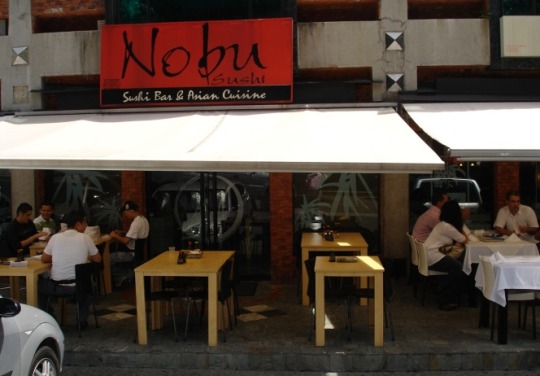
Sushi this astonishing doesn't come modest all the time, and it's seldom presented with Thai food, however you'll fulfill your Asian desires here. At a 'gastronomic retail shopping center' in a calm niche of the Los Palos Grandes district, Nobu is one of various stylish cafés with porch seating. There is no association with Nobu Matsuhisa, the widely acclaimed Japanese culinary specialist who ought to surely sue.
In spite of having nothing to do with the undeniably popular business, Nobu in Caracas serves a portion of the city's most noteworthy sushi and sashimi with a dish Asian food focused on Japan and Thailand. Notwithstanding, this truly famous foundation might be fairly rambunctious; it is ideal to sit ground floor.
Google Survey: 4.1/5
Address: Centro Comercial Las Cúpulas, 2a Av, cnr 5a Cross-over
Telephone: 1212 285-9009
Hours: lunch and supper
0 notes
Text
Best Budget Rums to try at Sendgifts
You may run out of rum while enjoying tiki cocktails with friends. Don't worry, Sendgifts will take care of it! We've put together a list of the best budget rums for mixing and sipping. Our favorite high quality rums that will keep your party going no matter what your budget is.
Captain Morgan Private Stock Rum
The Captain Morgan Private Stock rum is produced from molasses and aged for over two years in ex-bourbon barrels before blending with spices. Founded in 1945, Captain Morgan is named after a famous pirate and eventual governor of Jamaica. It was originally distilled by Seralles in Puerto Rico, but now it is distilled on St Croix. Captain Morgan Private Stock is the ideal rum for fans of the original spiced rum by the American Virgin Islands brand. Initially, the rum is aged for two years in oak barrels before being aromatized with fine spices, such as vanilla.
Private Stock Rum is a mellow, smooth, and deliciously spiced rum that is great for people who have once turned their back on spiced rum. You can drink it on the rocks or with rum and coke for some added sweetness.
Mount Gay Black Barrel Rum
Small-batch, handcrafted, and balanced with bold spicy flavors, Mount Gay Black Barrel Rum is made from rums that undergo both pot and column distillation. The unique blend delivers a bold and balanced flavor. There is a tempered sweetness to this rum that brings notes of oak barreling across the palate, making it both suitable for sipping and mixing. It's complex enough to enjoy on the rocks and smooth enough to use in a Dark and Stormy cocktail without burning a hole in your pocket.
A luxurious amber nectar revealing copious amounts of oak, vanilla, toffee leather. A true connoisseur’s delight.
Flor De Cana Grand Reserve Rum
Known as the "Sugarcane Flower" in Spanish, Flor De Cana Grand Reserve Rum is one of the few mass-produced rums from Nicaragua. With just a hint of sweetness, this rum isn't for those seeking a sweet and syrupy finish. Flor de Cana Grand Reserve is solidly crafted, revealing flavors of dark roasted coffee and cocoa.
It's a dark golden rum from one of Central America's most famous producers, Flor de Cana from Nicaragua. Delicious, and one of the best budget rums around. Aromas of toasted coconut, vanilla, and fig are joined by flavors of honey and dark chocolate. Try this with soda or mixed with sparkling water. Tasting notes includes the flavors of butterscotch, brown sugar, almond butter, dried figs, and a red apple.
Diplomatico Planas Rum
With its sweet and vanilla flavors, Diplomatico Planas Rum is a classic style of white rum. This rum is a unique blend of pot still, column, and batch kettle made rums. Then it is aged for up to 6 years and charcoal filtered for clarity. This is intended to replace the Diplomatico Blanco.
According to Venezuelan law, rum cannot be bottled until it is at least two years old. In this case, however, some of the rums are aged in ex-bourbon barrels for up to six years. As a result, the blend is charcoal filtered up to six times, removing all colors and creating a very refined, texturally-rich white rum, perfect for serving on the rocks as well as, of course, in your classic Mojitos and Daiquiris.
Planas replaces Diplomatico's Blanco Reserva. This whiskey is aged for six years, just like its predecessor, but the strength has been increased to 47%. Rich and chewy, this rum has notes of cappuccino and a nutty finish.
Cruzan 9 Spiced Rum
Cruzan 9 Spiced Rum is one of the cleanest rums in the industry with its low levels of fusel oils, a by-product of the distillation process which, if not removed, can taint the smell and taste of the spirit. Its quality is also linked to the aging process, with most Cruzan rum varieties being aged a minimum of 14 months and up to 12 years.
The aroma is intoxicating, with notes of vanilla, sweet caramel, and dried spices. There are complex layers of vanilla, cinnamon, nutmeg, and toasted wood notes in Cruzan 9's initial taste.
It has a bold, smooth taste and a rich amber color. There are nine spices in the blend including vanilla, nutmeg, cinnamon, ginger, cloves, mace, allspice, pepper, and juniper berries. The taste is complex and includes notes of vanilla, cinnamon, nutmeg, and warm spices. The finish is intense and slightly dry. There is a rich blend of vanilla, caramel, and dried spices on the nose.
Bacardi Superior Rum
Bacardi Superior can be used in many light and refreshing cocktail recipes. It has a crisp taste with distinctive notes of almond and vanilla developed from being aged in white oak barrels. With its balanced taste and delicate flavor, Bacardi Superior mixes well with just about anything.
It is the most popular white Rum in the world and is used in countless cocktails. To ensure purity, Bacardi is filtered through charcoal and aged in white oak.
With a little spice and pepper, the nose is light and fresh. A medium-bodied wine with hints of tropical fruit, dark brown sugar, and winter spices on the palate. It has a smooth vanilla spice finish.
Why trust Sendgifts for best budget rums?
Sendgifts offers the best liquor delivery service that brings your favorite liquor right to your doorstep. Our online store carries some of the best and most hard-to-find liquors on the market.
Whether it’s a festival, party, occasion, or you’re planning to give your friend the finest quality liquor, our online store is the perfect platform for you to scroll through the products and pick out the one you like the most.
Visit our online liquor store for our other affordable rum collection and order rum online.
#sendgifts#best budget rums#high quality rums#spiced rum#premium liquor delivery service#finest quality liquor#best budget rums collection#order rum online#online liquor store#most popular white Rum#Wine and Liquor Gift Delivery Services in Usa#alcohol online delivery in USA#alcohol delivery services in Canada#online liquor stores
0 notes